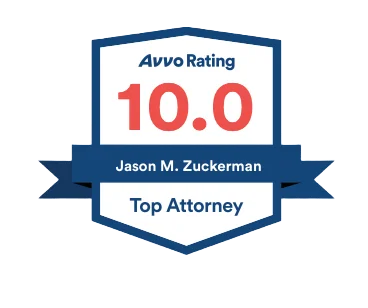Lawyers occasionally refer to a “constructive discharge” claim when talking about an employee who has involuntarily resigned from their job. Sometimes it’s referred to as constructive termination, constructive dismissal, or constructive discharge. But it all boils down to a basic question: were your working conditions so unbearable that you had no other choice but to quit your job?
“Constructive discharge” defined
The Supreme Court has defined “constructive discharge” as
Under the constructive discharge doctrine, an employee’s reasonable decision to resign because of unendurable working conditions is [equated with] a formal discharge for remedial purposes **** The inquiry is objective: Did working conditions become so intolerable that a reasonable person in the employee’s position would have felt compelled to resign?
Pennsylvania State Police v. Suders, 542 U.S. 129, 141 (2004) (citations omitted and alterations added). Courts have recognized constructive discharge claims in a variety of employment discrimination cases, including
- pregnancy;
- national origin;
- religion;
- race discrimination;
- sex discrimination; and
- whistleblower retaliation cases.
 Legal framework for constructive discharge claims in harassment cases
Legal framework for constructive discharge claims in harassment cases
In general, a Title VII plaintiff must “mitigate damages by remaining on the job” unless that job presents”such an aggravated situation that a reasonable employee would be forced to resign.” Hendrix v. Napolitano, 77 F.Supp.3d 188, 193 (D.D.C. 2015) (citations omitted).
The U.S. Court of Appeals for the Fifth Circuit, for example, has held that a Title VII constructive discharge claim”could not be sustained simply upon discrimination manifested in the form of unequal pay; rather, such discrimination required an ‘aggravated situation’ to give rise to a constructive discharge.” Id. (quoting Bourque v. Powell Elec. Mfg. Co., 617 F.2d 61, 66 (5th Cir. 1980)).
Likewise, the U.S. Court of Appeals for the D.C. Circuit has found that a constructive discharge of a Title VII plaintiff must be justified by the existence of “aggravating factors” beyond the Title VII discrimination itself. Clark v. Marsh, 665 F.2d 1168, 1174 (D.C. Cir. 1981). To prevail on constructive discharge claim in the D.C. Circuit, therefore, a Title VII plaintiff must show that:
- intentional discrimination existed;
- the employer deliberately made working conditions intolerable; and
- aggravating factors justified the employee’s conclusion that she had no option but to end her employment
Carter v. George Wash. Univ., 180 F.Supp.2d 97, 111 (D.D.C. 2001) (citing Clark, 665 F.2d at 1173-74).
Thus, a successful hostile work environment claim does not substitute for an unproven claim for constructive discharge. Brown v. District of Columbia, 768 F.Supp.2d 94, 100 (D.D.C. 2011) (citations omitted). Instead, “to prove constructive discharge, the plaintiff must “demonstrate a greater severity or pervasiveness of harassment than the minimum required to prove a hostile working environment.” Id. at 101 (citations omitted and emphasis added).
Constructive discharge and potential money damages
“The majority of federal circuits have held that, absent actual termination or other discriminatory discharge, proof of constructive discharge is required in order to award a successful Title VII plaintiff with equitable relief in the form of front pay or back pay.” Brown, 768 F. Supp. 2d at 101.
To receive back pay in a Title VII employment discrimination case in which you resigned, it may thus be necessary to prove facts supporting a constructive discharge claim before a court will make your employer pay for the lost wages since you left your job.
Deadline for filing constructive discharge claim
The Supreme Court recently weighed in on the deadline for filing a constructive discharge complaint under Title VII of the 1964 Civil Rights Act. In Green v. Brennan, 136 S.Ct. 1769, 1777 (2016), the Court held that “[u]nder the standard rule for limitations periods, the limitations period should begin to run for a constructive discharge claim only after a plaintiff resigns.”
The Court continued, “[a]t that point–and not before–he can file suit for constructive discharge. So only at that point–and not before–does he have a ‘complete and present’ cause of action. And only after he has a complete and present cause of action does a limitations period ordinarily begin to run.” Id.
Finally, the Court had to determine when precisely an employee is considered to have resigned. Ultimately, the Court found that “a constructive discharge claim accrues–and the limitations period begins to run–when the employee gives notice of his resignation, not on the effective date of that resignation.“. Id. at 1782 (emphasis added).
Key takeaways
In evaluating whether you will be able to prove a constructive discharge claim in court, remember that:
- Constructive discharge claims are considered to be very difficult (although certainly not impossible) claims to win at trial;
- for example, it’s not enough to prove that your employer subjected you to a hostile work environment, certain courts will require you to prove additional aggravating factors;
- constructive discharge claims can arise in many different kinds of employment discrimination and whistleblower retaliation cases;
- the deadline for filing a constructive discharge claim begins to run when you give notice of your resignation, not on the effective date of your resignation
If considering resigning due to conditions at work, talk with an experienced employment lawyer to discuss options and how this may impact your case.









